The two stories taken from Ovid’s Metamorphosis—namely The Rape of Proserpina (1621-22), and Apollo and Daphne (1622)—were used in as a paragon of argument to support the sculptors' claims that three-dimensional imitation was more lifelike. Given the eroticism of the statues, a three-dimensional sculpture could more convincingly convey the physical power of touch. In them, eroticism served a programmatic purpose, namely declaring the superiority of sculpture over the other arts.
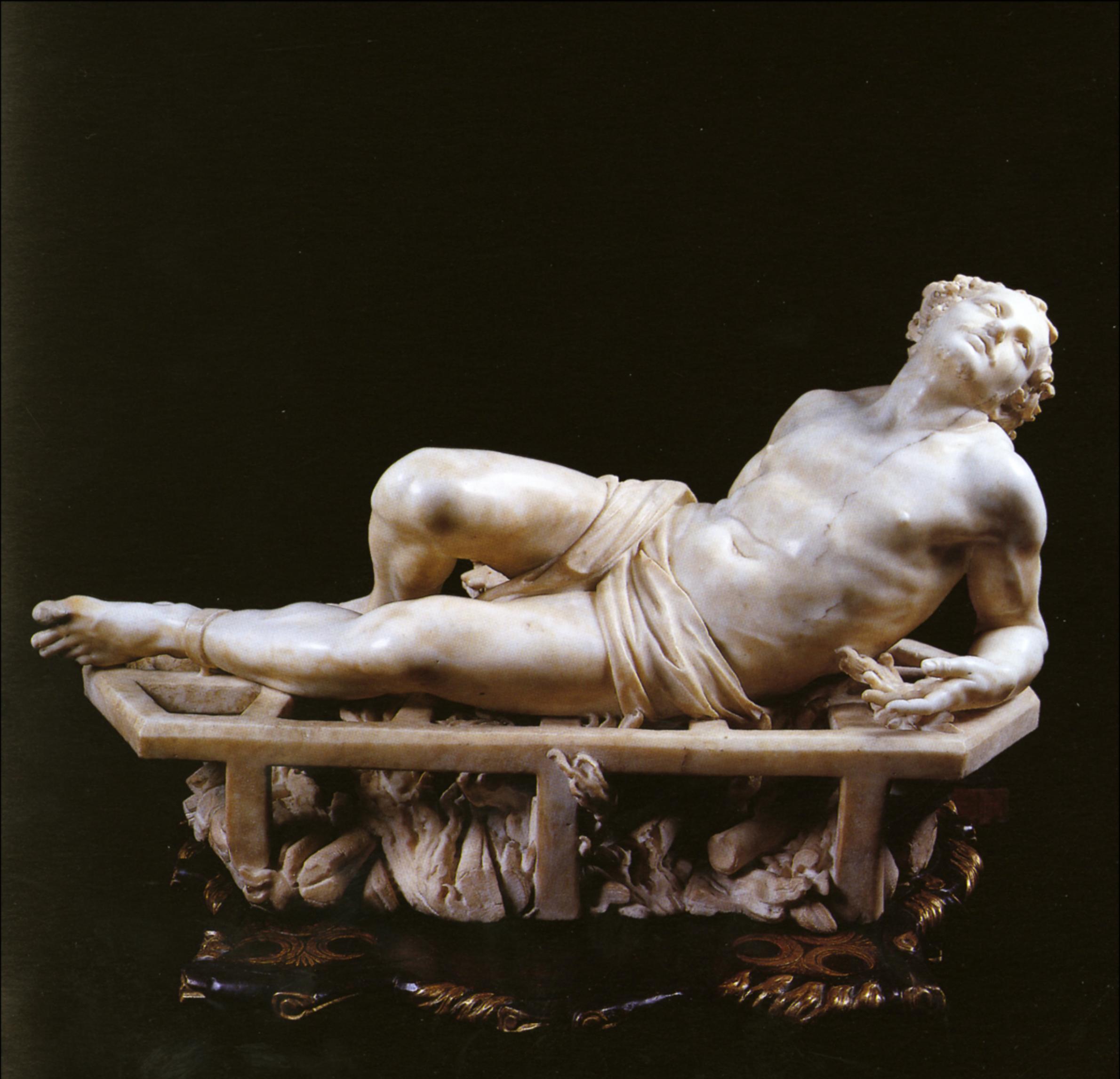
Gian Lorenzo Bernini, Martyrdom of Saint Lawrence, 1617.
There's no doubt that the statues by Baroque sculptor Gian Lorenzo Bernini were markedly sensual, which might seem paradoxical in the era of the Counter-Reformation and for an artist whose main patrons were part of the ecclesiastical aristocracy. Even so, while members of the papacy generally did lean conservative, Scipione Borghese gave Bernini free rein. And while, sure, lust was seen as one of the greatest dangers to the human soul, starting from the fall of Adam and Eve, it was no secret that what Bernini created was wonder-provoking and contributed to an influx of tourism in the jubilee year. In addition, sensuality could often be seen as a display of the marvelous—one of the main pursuits among artists in the Baroque era.
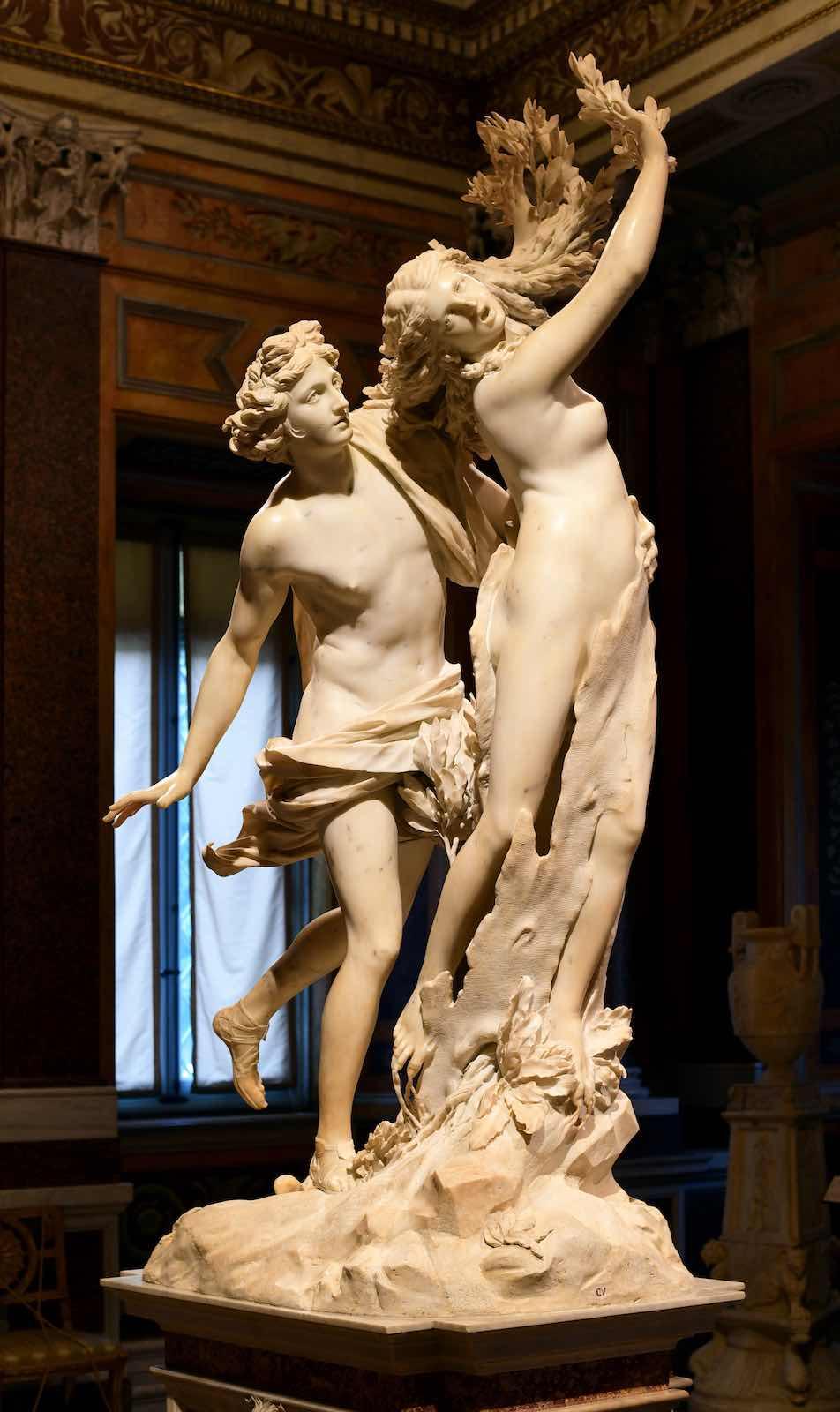
Gian Lorenzo Bernini, Apollo and Daphne, 1622-25. Wikimedia Commons.
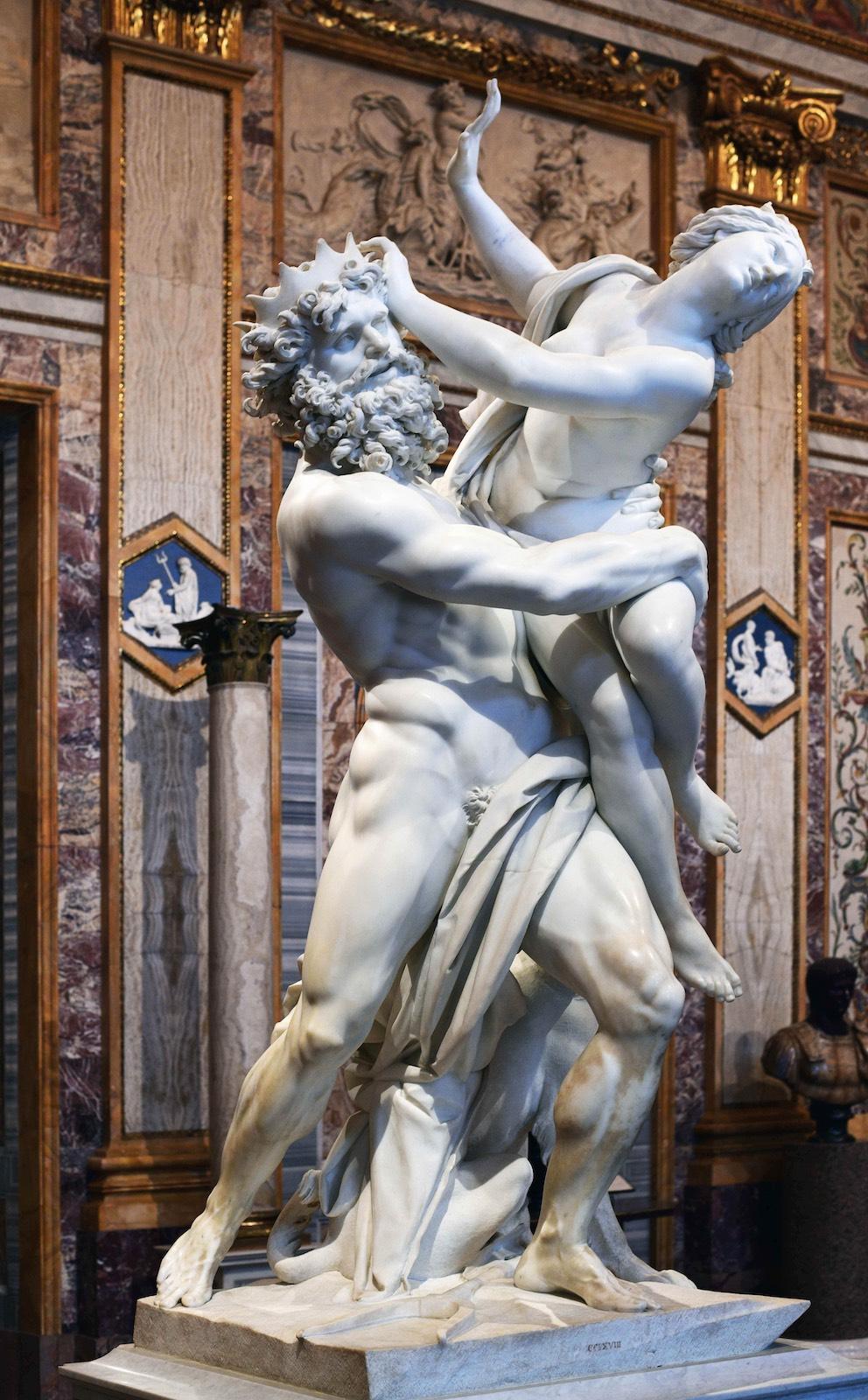
Gian Lorenzo Bernini, The Rape of Proserpina, 1624.
The statues also had a purposeful sense of direction. "[Apollo and Daphne] describes all the essentials of the pagan myth but at the same time requires that the sum of its meaning be understood in time," wrote Joy Kenseth in The Art Bulletin. "To achieve this poetic effect in sculpture, Bernini has necessarily adopted the kinetic views or ‘multifaciality’ of Mannerist statuary but, significantly, he has limited these merging views to an arc of about 180."
The tree-like structure Daphne is transforming into is meant to be seen last. In the case of Pluto and Proserpina, we are first meant to see the struggle, and then the way he is sensually grabbing her flesh. In the artwork, the god's hands appear to leave indentations on Proserpina's flesh. Yet, this is not a gratuitous display of sensuality.
For instance, Pygmalion—who, according to mythological tradition, famously brought one of his statues to life—was able to make hard ivory, "yield beneath his fingers, as Hymettian wax grows under the sun." The marks Pluto leaves on Proserpina's flesh echo, in a way, the ones that Pygmalion was wary of leaving on his own ivory creation.
In Bernini's Ecstasy of Saint Teresa (1645-52), the saint is portrayed swooning as an angelic being hovers above her, holding a spear. No other artist before or after Bernini dared portray the saint in such eroticized tones: Lips parted, head swung back, writhing.

Gian Lorenzo Bernini, Ecstasy of Saint Teresa, 1647–52.
Inspiration might have come from Giovanni Lanfranco, an older colleague who painted the ecstasies of Saint Teresa and, more importantly, Saint Margaret of Cortona. The latter alludes to some degree of eroticism, with a pose similar to Bernini's eventual Saint Teresa.
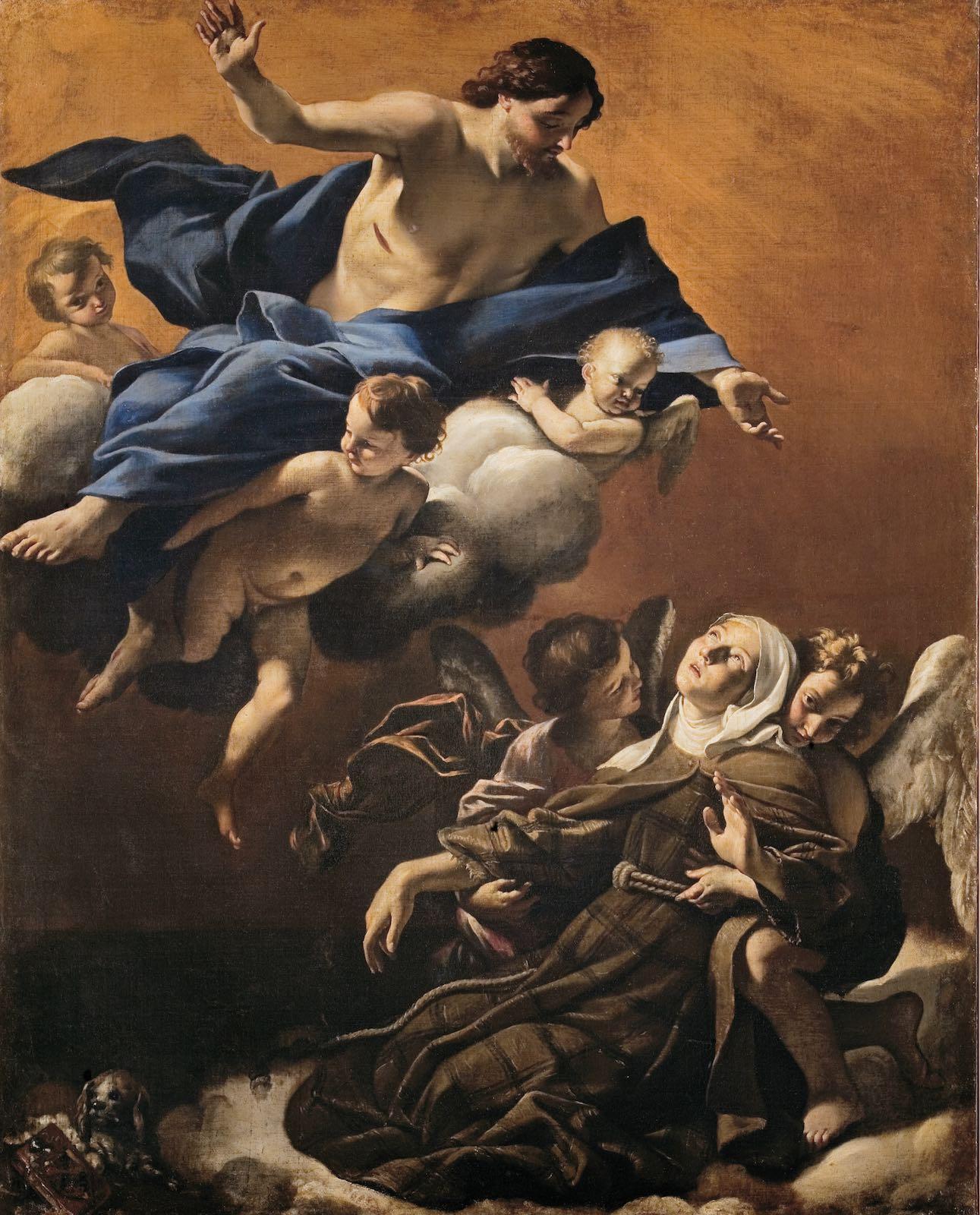
Giovanni Lanfranco, Ecstasy of Saint Margaret of Cortona, 1622.
"Perhaps we are no longer capable of being embarrassed or shocked by Bernini's statue of Teresa in ecstasy, but the statue still exemplifies the paradox [that] the more artfully one tries to represent the sacred, the more profane the result," wrote Tom Hayes in American Imago.
Similar in tone is the ecstasy of the Blessed Lodovica Albertoni (1671-74), in which the subject is shown fully reclined, her head resting on a finely embroidered pillow. Her state of turmoil and experience of communion with God are both heightened by the folds of her habit and of the deeply crumpled cloth at the base of her bed which Bernini sculpted in jasper.
Bernini’s Lodovica was the base of a Banksy stencil created for the city of Naples. The Contemporary artist chose to reuse the Baroque expression of ecstasy to covey his own message about the pleasure and agony brought on by the consumption of fast food.

Gian Lorenzo Bernini, Blessed Ludovica Albertoni, 1671-74.
Bernini's sensuality also extended to the depiction of male saints and youths in a state of distress. Saint Sebastian (1617) is reminiscent of Michelangelo's Pietà, The Deposition (Florentine Pietà), and The River God of Casa Buonarroti. Sebastian’s martyrdom is on full display. His body—pierced by arrows that pin him to a tree—is offset by the softness of the composition and its Mannerist echoes.
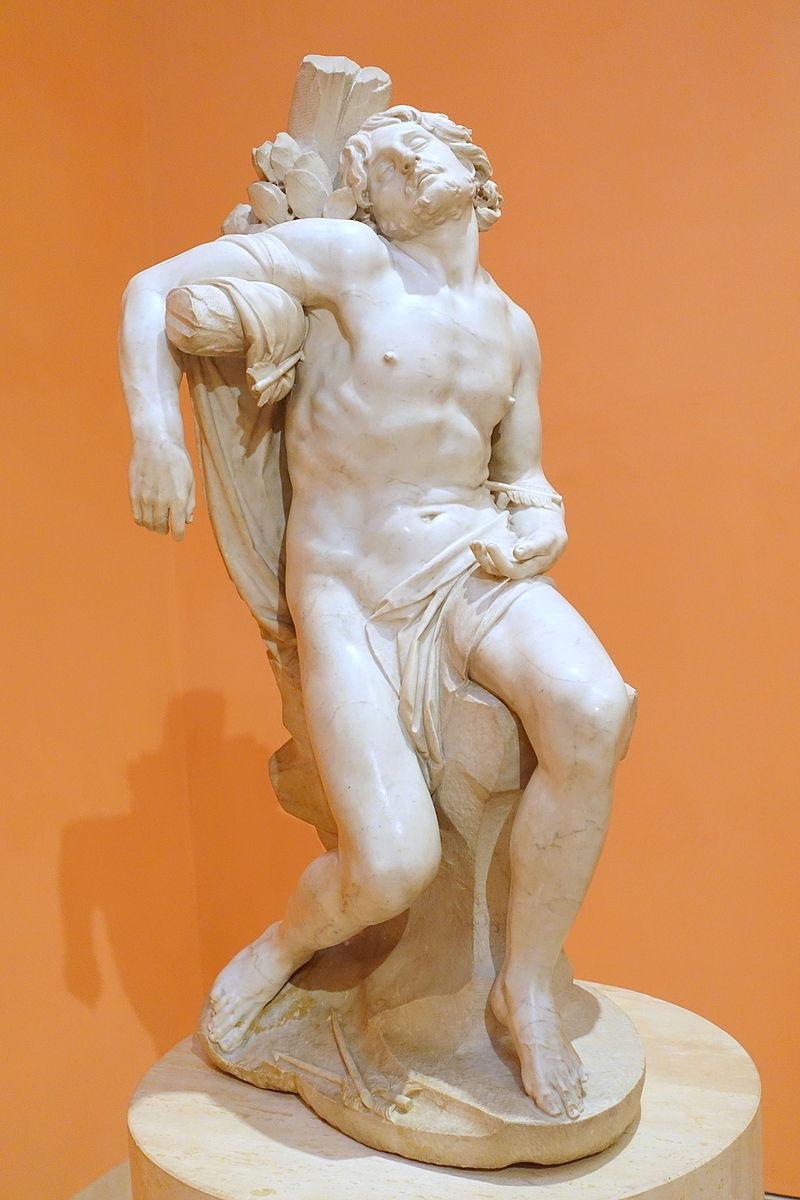
Gian Lorenzo Bernini, Saint Sebastian, 1617-18.
Saint Lawrence, completed in the same year as Saint Sebastian, has a similar composition. The sculpture also similarly refers to the Pietà and The River God. Yet, unlike the reclining Sebastian, this sculpture’s subject is shown laying across an iron grid that will eventually burn him alive.

Gian Lorenzo Bernini, Martyrdom of Saint Lawrence, 1617.
According to the artist’s son, Bernini did his best to experience the martyrdom of Lawrence firsthand. “He stood bare legged on one leg near smouldering ashes and thus experienced the martyrdom of the saint, while using a mirror and a pencil to draw the painful expression of his face, and observed the various effects that his own flesh underwent as a result of the heat of the flames," he wrote in Vita del Cavalier Gio, Lorenzo Bernini in 1713.

























